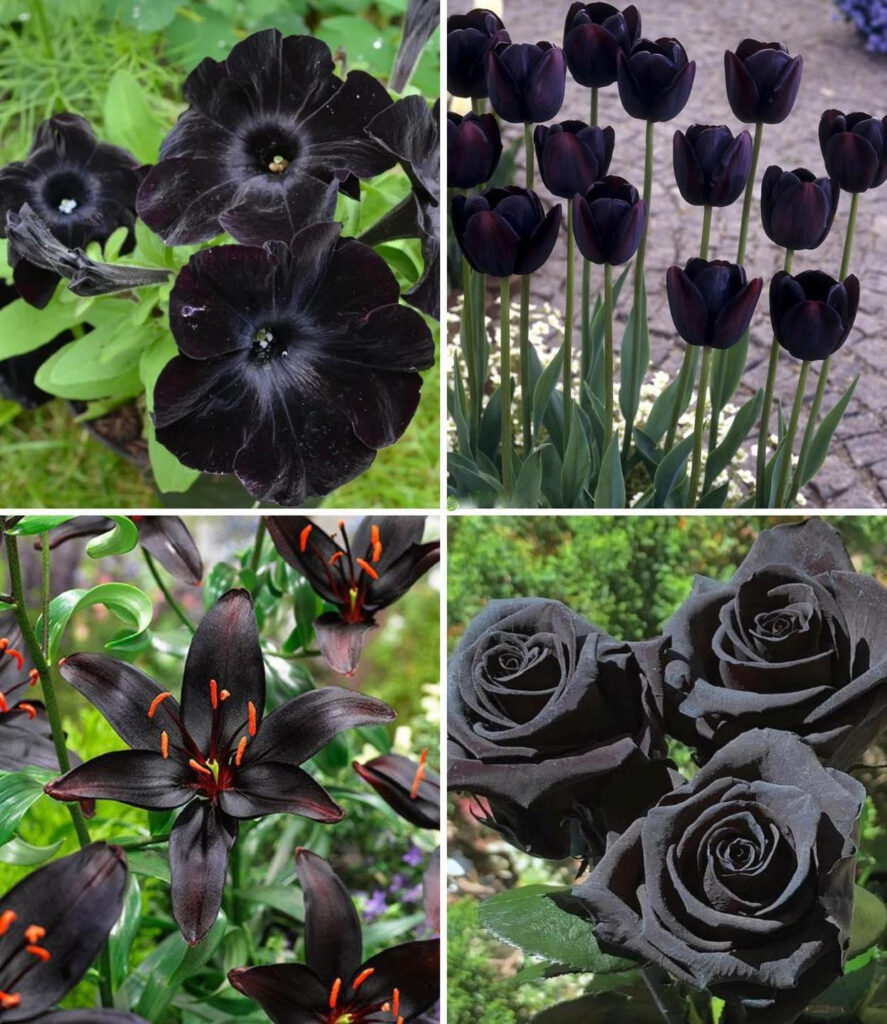Indeed, the allure of black flowers has captivated people for centuries, evoking a sense of mystery, elegance, and drama. While truly black flowers are rare in nature, some blooms exhibit deep shades of burgundy, purple, or maroon that appear almost black, adding a unique and striking element to gardens and floral arrangements.
Black flowers have been celebrated in various cultures and contexts throughout history. In Victorian times, they symbolized mourning and were often incorporated into funeral arrangements. However, they also held a certain romantic appeal and were sometimes exchanged as tokens of secret love or forbidden passion.
In contemporary gardening and floral design, black flowers continue to be prized for their dramatic impact. They can be used to create striking contrasts in mixed flower beds, add depth and richness to bouquets and centerpieces, or lend a gothic or exotic flair to themed gardens.
Some popular varieties of flowers that exhibit dark, nearly black hues include:
- Black Hollyhock (Alcea rosea)
- Black Velvet Petunia (Petunia x hybrida)
- Black Dahlia (Dahlia spp.)
- Black Bat Flower (Tacca chantrieri)
- Black Iris (Iris chrysographes)
- Black Calla Lily (Zantedeschia spp.)
- Black Pansy (Viola tricolor)
- Black Tulip (Tulipa spp.)
- Black Hellebore (Helleborus niger)
- Black Viola (Viola cornuta)
While the color black in flowers may not be as common as other hues, its rarity and distinctive beauty continue to fascinate and inspire gardeners, florists, and artists alike.


